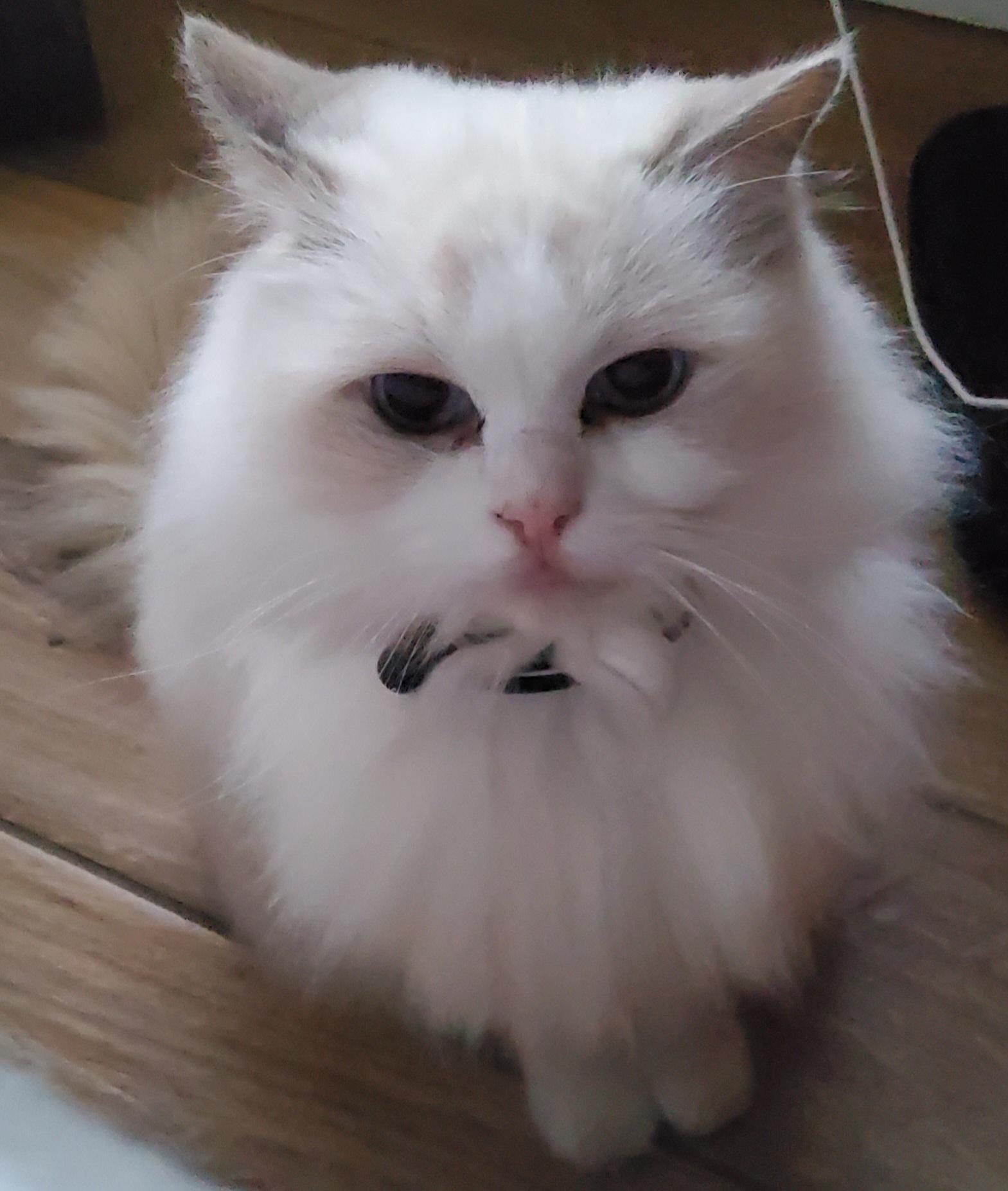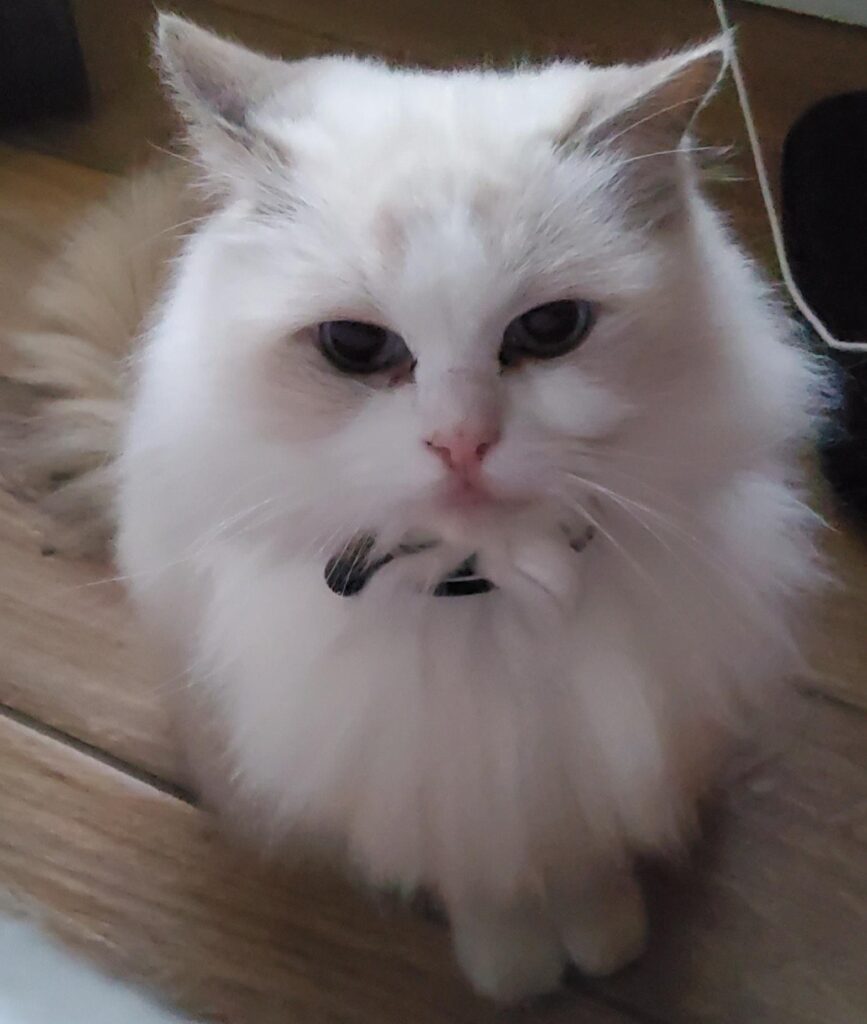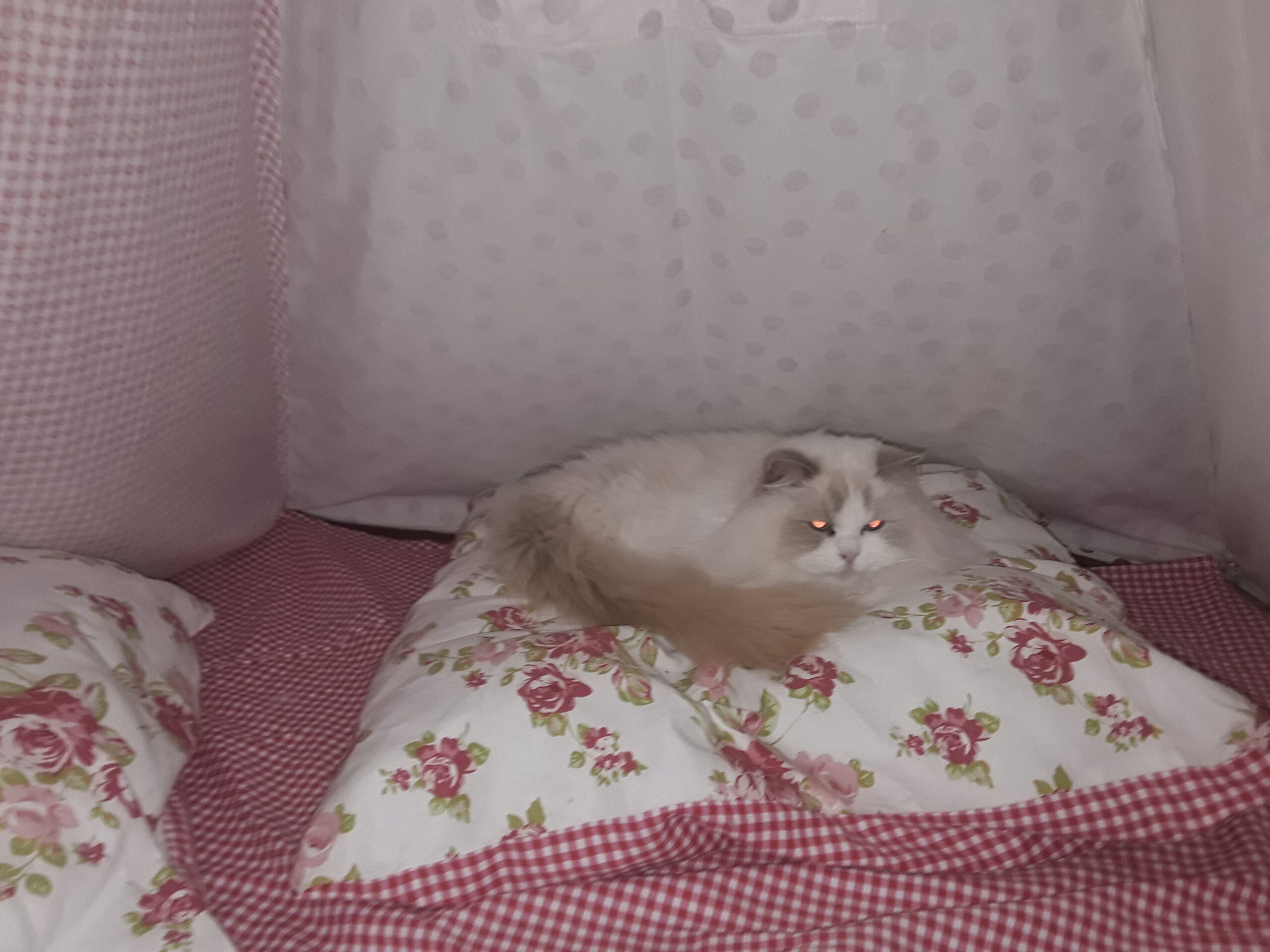
This blog post introduces the Ragdoll cat breed. 🐱

Introduction
There are 73 breeds of pedigreed cats (which are domesticated cat breeds) which come in all shapes and sizes. My favourite cat breed is the Ragdoll cat. 🐱💜
The Ragdoll breed of cat was first bred in the 1960s by Ann Baker, who decided to create a loveable cat breed that was fluffy, longhaired, tolerant with kids and family, and easy to keep. 😻❤️
Benefits of owning a Ragdoll cat
Ragdoll cats are unique and wonderful pets in many ways. They can be taught tricks, are intelligent, extremely friendly, easygoing and tolerant, especially with kids and family members. Ragdoll cats are very good pets from my experience of owning one for a number of reasons:
- Since they are bred to be tolerant, grooming them can be quite easy
- They love being held, which for people seeking a cuddly cat, is a delight
- They follow their owner(s) around
- They have silky fur that is beautiful to the touch
- They (if allowed to) can and will sleep with their owners
- They get along well with other household pets and family members
- They get along well with children
- They can be great as therapy animals for autism
- In my experience, Lilli has been a great “mouser” (a cat that catches mice), however not all Ragdoll cats are.
Things to watch out for when owning a Ragdoll cat (Or any longhaired breed of cat)
Ragdolls do have some drawbacks. Their long fur makes them prone to overheating, thus making them harder to keep cool in hot climates like Australia and the equatorial regions of the world. They require a lot of water to drink, especially during the summer months. They may even vomit if they get too hot, so watch their body temperature if you live in a hot climate, especially one that gets to 47C (116.9F). 🌡
For 12 weeks of the year, it has been the experience with my Ragdoll cat, that in spring, Lilli needs help with shedding her winter fur, as it is prone to becoming matted during that time. Daily brushing is required, and cutting out of the fur lumps. For the rest of the year, Lilli requires just a weekly brush through of the fur. Lilli is very tolerant of grooming, and seems to enjoy grooming, making it a very easy process. 🐱
What do Ragdoll cats actually look like?

The reason why Lilli’s eyes appear to be “glowing” red in that photo is because of a layer called the tapetum lucidum, which allows cats and nocturnal animals to see properly at night. This is an extra reflective layer in the cats eyes that focuses more light in, allowing the cat to see in low-light conditions like at night. In the case of the “red eye” effect seen in blue-eyed cats like Lilli, you can read more about it on Wikipedia in the References section down at the bottom of this post.
The lifespan of a Ragdoll will average around 16 years of age. This is slightly older than the average cat, which is 14 years. ⏳
All purebred Ragdolls have blue eyes, though the shade of blue and shape of the eyes can vary. If your Ragdoll has shades of green or yellow in it’s eyes, then it is most likely a mixed breed. 👁
Why Lilli is scared of house guests
Some Ragdoll cats are very timid, and this includes Lilli. If anyone other than her two favourite people (which is Zachary and his carer) are in her presence, then Lilli will immediately try to run and hide underneath the bed or under the bedding or hide among the shoeboxes (a favourite place of hers).
She may also be found less commonly inside the drawers of the wardrobe, and she has been known to growl when frightened, as this creates the illusion of a larger-than-usual cat. This growling is instinctive behaviour.
We have also found that showing Lilli repeatedly to an unknown person over time will gradually increase her trust and confidence towards that person over time.
The reason behind Lilli running away from house guests or anyone she has not met, is because she does not trust them nor does she know what they might do to her, so she runs away to another part of the house until they leave.
Ragdoll cats and autism
Ragdoll cats can help out greatly with autism. Their silky fluff is perfect for tactile hypersensitivity, and their easy-going, loveable nature is also perfect for classic autism (this is severe autism) in fact, autism of all types.
While their voices can be loud, the easy-going, endless patience, loveable nature of a Ragdoll means that Ragdolls tend to mostly have a positive influence on autism.
How Lilli has had a positive influence on me
Lilli has played a vital role in keeping me calm over the years. The long, silky fur that she has is good for tactile hypersensitivity like as said in the above paragraph – it lowers anxiety.
Lilli also rubs around my legs. She does this especially when I am having trouble coping, while I’m rocking back and forwards when experiencing distress. 😺
Another factor in keeping me calm is that she will go to sleep with me on a bed, or that she will fall asleep on a soft chair near me in the same room while I work on the computer, while I’m sitting on another chair. 🐱🖥
Lilli also enjoys lots of cuddles throughout the day, and this is directly attributed to her loving temperament, tolerant nature and how she goes limp when picked up (Which is why the breed is called a Ragdoll in the first place). 😺
References
Ragdoll cats – everything you should know (5 benefits of ragdoll cat). (2023, December 11). Web.archive.org. https://web.archive.org/web/20231211114636/https://petgroomingworld.com/5-benefits-of-ragdoll-cat/
Ollia, E. (2022, April 28). How many cat breeds are there? Hill’s Pet Nutrition. https://www.hillspet.com/cat-care/new-pet-parent/how-many-cat-breeds-are-there?lightboxfired=true#
Wikipedia contributors. (2024, July 4). Ragdoll. In Wikipedia, The Free Encyclopedia. Retrieved 14:03, July 12, 2024, from https://en.wikipedia.org/w/index.php?title=Ragdoll&oldid=1232628888
Catherine, M. (2021, August 17). Ragdoll cat facts – 12 things you probably didn’t know about ragdolls. Ragdoll Love. https://ragdolllove.com/ragdoll-cat-facts/
Wikipedia contributors. (2024, May 14). Tapetum lucidum. In Wikipedia, The Free Encyclopedia. Retrieved 14:02, July 12, 2024, from https://en.wikipedia.org/w/index.php?title=Tapetum_lucidum&oldid=1223797932
Wikipedia contributors. (2024, May 23). Red-eye effect. In Wikipedia, The Free Encyclopedia. Retrieved 14:01, July 12, 2024, from https://en.wikipedia.org/w/index.php?title=Red-eye_effect&oldid=1225258930
Conclusion
This is pretty much all there is to about the Ragdoll breed of cat. 😺 See you on the next blog post. 📰
